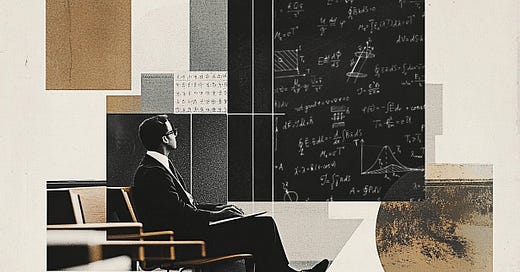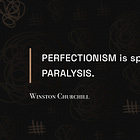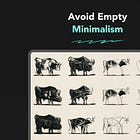Creative Success is a Numbers Game
Don't overlook the mathematical edge that powers creative breakthrough
Welcome to Unknown Arts, where we explore the creative power of art and technology. Ready to forge ahead into the unknown? Join the journey!
Talent alone won't guarantee your creative success
Imagine for a moment you're a young Pablo Picasso.
You have the talent, the inspiration, the drive. All the traditional markers of creative potential. But instead of forging ahead to create thousands of works of art, you lingered, intent on creating a single masterpiece.
Which path do you think would lead to greater impact?
Conventional wisdom tells us that creative success springs from talent and flashes of inspiration. But there's a hidden factor at play. A mathematical edge that separates the creatives who make it big from those who don't.
Here's the truth: your creative success isn't just about talent. It's a numbers game. The most successful creators and innovators have cracked the code of creative probability. They've realized that the path to quality is paved with quantity.
More attempts dramatically increase your odds of a breakthrough
Think of your creative career as a giant lottery.
Each piece you create is a ticket.
Would you rather have one ticket or a hundred? How about a thousand?
In the luck sweepstakes of creativity many entries will flop and most will get a lukewarm response. But a few could resonate deeply and win big.
This dynamic propels creative careers.
Let's break it down mathematically.
If you have a 1% chance of creating a breakthrough piece, that means your first attempt has a 99% chance of failure. Not a great bet.
But after 10 attempts your odds of success rise to about 9.6%.
Increase that to 100 attempts, and your odds jump to 63.4%1.
The lesson is clear: in creativity, volume isn't just an option – it's the option.
You want a hit?
Start making the numbers work in your favor.
You can't predict which of your creations will resonate, but each attempt accelerates growth
Here's a confession: I'm terrible at predicting which of my articles will resonate. More often than not, the ideas I hype myself into thinking are home runs strike out. Then, a quick thought I dash off in a few minutes explodes in popularity.
This isn't just my experience. Talk to any creator, and you'll hear similar stories.
Why? Because resonance is fundamentally unpredictable. You can't guarantee what will strike a chord with your audience at any given moment.
This unpredictability is why focusing all your energy on one "perfect" creation is so risky. The alternative? Create and share more. Each piece you put out there is another chance to resonate, another ticket in the creative lottery.
I know this is easier said than done.
Your early work won't be your best and it stings to have to confront that fact. But working through that experience drives your growth.
Every creation is a mini-experiment, sharpening your skills and refining your voice. When you share frequently, you gather invaluable data on what works. Your 100th creation will inevitably be better than your first, but you can't get there without going through the first 99.
Prolific creators leverage the power of big numbers to achieve greatness
Pablo Picasso created an estimated 147,800 pieces of art in his lifetime. Yet, most people can name only a handful - "Guernica," "Les Demoiselles d'Avignon," or "The Old Guitarist." His iconic style didn't emerge fully formed but evolved through thousands of experiments, from his Blue Period to Cubism and beyond.
Stephen King has published over 60 novels and more than 200 short stories. Yet, most people can name only a handful of his works - "The Shining," "It," or "Carrie." These bestsellers emerged from a vast sea of writing. For every "Carrie" that launched his career, there are dozens of less-known works that paved the way for his masterpieces.
Picasso and King understood a fundamental truth: greatness emerges from volume. They didn't wait for the perfect idea or the ideal moment. Their success wasn't about trying to maximize a single hit, but about creating enough volume to allow those rare, extraordinary pieces to emerge.
The potential payoff is bigger than you can imagine
Before we wrap up, there's one more crucial point to consider.
In the digital age, when something hits, it hits big. The internet's power laws mean that breakout successes aren't just marginally better than average – they have orders of magnitude more impact.
A viral idea isn't just 10% more valuable than your typical content. It could be 100 times, even 1000 times more valuable. This exponential potential makes the creative lottery even more compelling.
While creating consistently can feel like a grind, remember that each piece has the potential to bring that breakthrough. And when it lands, the payoff can be enormous.
We'll dive deeper into this phenomenon in a coming week.
Maximize your entries in the creative lottery
Your creative career is a numbers game and you hold the power to tilt the odds in your favor. Every piece you create and share is a both a lottery ticket and an experiment yielding valuable data. The more you create, the better your odds of breakthrough, of resonance, of success.
Look to the greats—the Stephen Kings, the Picassos. They didn't just create masterpieces; they created constantly. They understood that greatness emerges from volume.
So follow last week’s guidance and be prolific. Shift your focus from waiting for the perfect idea to maximizing your creative output.
Before you can win the grand creative sweepstakes, you first have to play.
And you have to play often.
So get in the game, start taking shots, and watch as the odds shift in your favor.
Your next creation could be the one that changes everything.
Until next time,
Patrick
If you got a little value from this post, consider subscribing or sharing. Follow me on X, Threads, or LinkedIn for more.
Similar Posts
The general formula for this calculation is: P(at least one success) = 1 - (1 - p)^n
Where: p is the probability of success on a single attempt & n is the number of attempts






